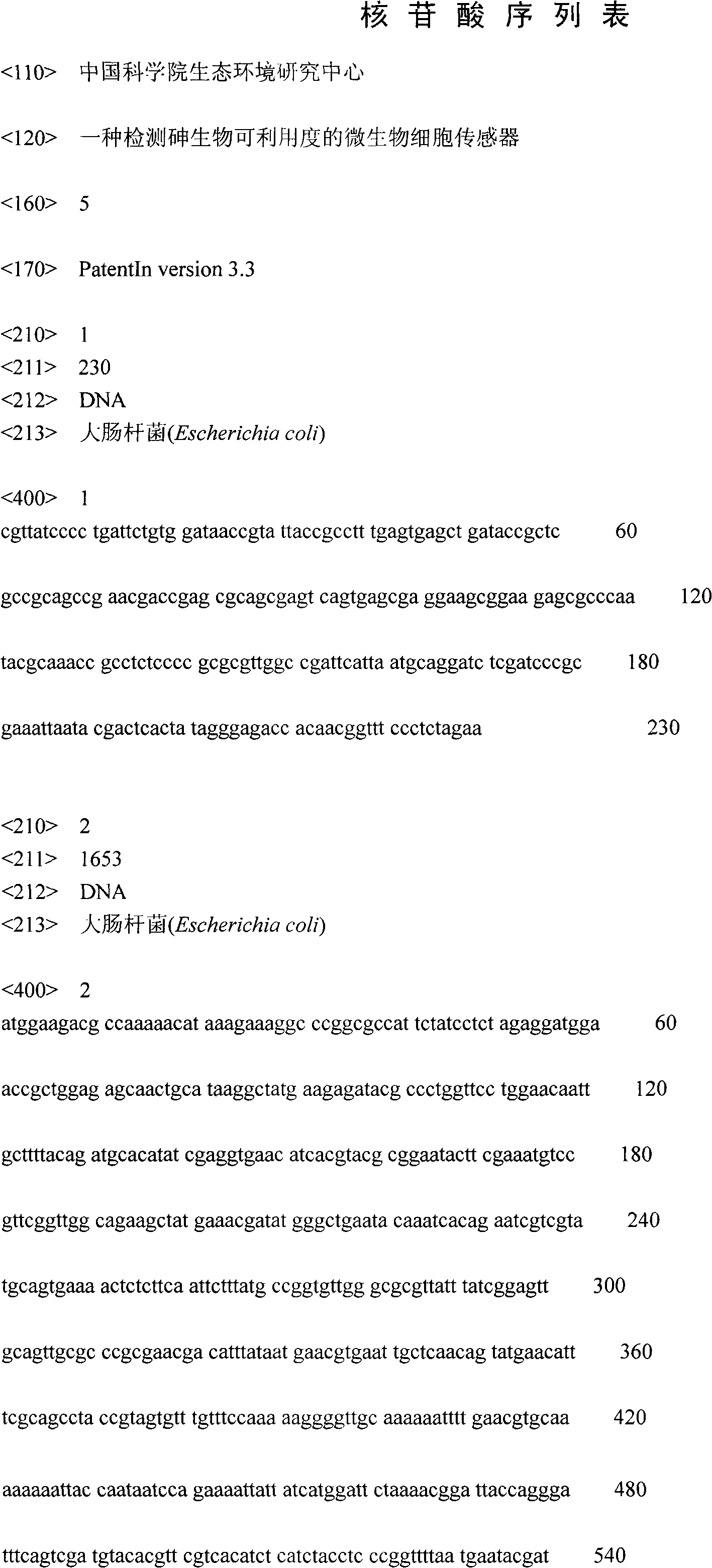Microbial cell sensor for detecting arsenic bioavailability degree
A technology of microbial cells and sensors, applied in the field of microbial cell sensors, can solve the problems of not reflecting the bioavailability of arsenic, expensive instruments, complicated operations, etc.
- Summary
- Abstract
- Description
- Claims
- Application Information
AI Technical Summary
Problems solved by technology
Method used
Image
Examples
Embodiment 1
[0023] Step 1: Inoculate a single colony of sensor cells in a 50mL Erlenmeyer flask, add ampicillin to a final concentration of 100μg / mL, 37°C, 200r min -1 Overnight culture;
[0024] Step 2: Take 0.5mL of the above bacterial solution into 14.5mL of fresh LB medium, 37°C, 200r min -1 Grow to OD 600 = 1.2;
[0025] Step 3: Dilute the bacterial solution to OD with fresh LB medium 600 =0.4;
[0026] Step 4: Take 50 μL of the diluted bacterial solution and mix them with the arsenic standard solution and the sample to be tested in equal volumes, and let stand at 30°C for induction;
[0027] Step 5: Mix 40 μL empty vector cells with 50 μL induction medium, add 10 μL 1M K 2 HPO 4 (pH7.8) and 20mM EDTA lysis buffer, quickly freeze the mixture at -70°C for 10 minutes, then bathe the cells in water at 23°C for 3 minutes, and finally add 300 μL of freshly prepared lysis mixture (see appendix), mix well and incubate at room temperature for 10 minutes;
[0028] Step 6: Add 20 μL of ...
PUM
 Login to View More
Login to View More Abstract
Description
Claims
Application Information
 Login to View More
Login to View More - R&D
- Intellectual Property
- Life Sciences
- Materials
- Tech Scout
- Unparalleled Data Quality
- Higher Quality Content
- 60% Fewer Hallucinations
Browse by: Latest US Patents, China's latest patents, Technical Efficacy Thesaurus, Application Domain, Technology Topic, Popular Technical Reports.
© 2025 PatSnap. All rights reserved.Legal|Privacy policy|Modern Slavery Act Transparency Statement|Sitemap|About US| Contact US: help@patsnap.com



